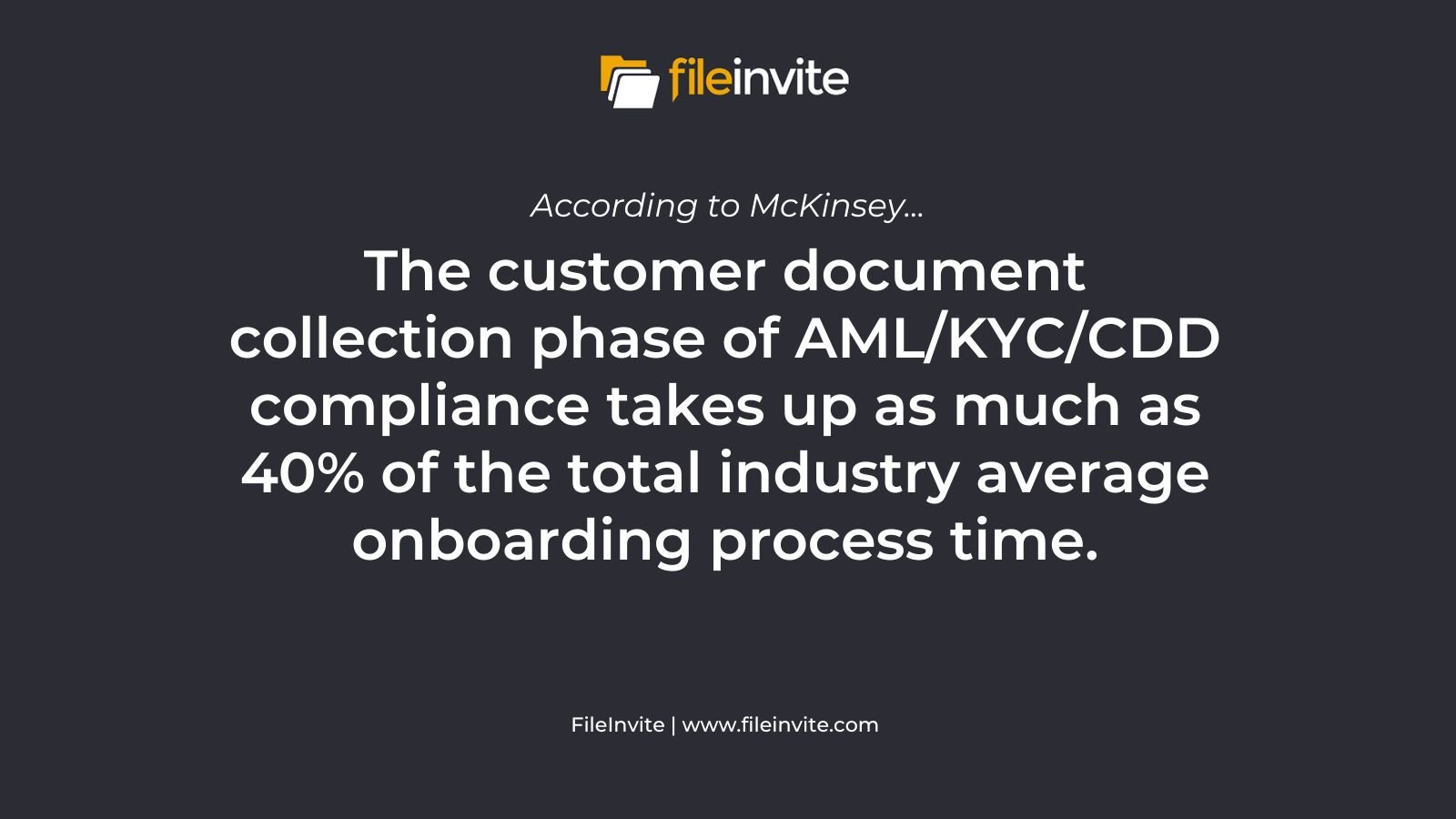Customer expectations for seamless digital experiences and convenient digital self-service options are on the rise across industries. Financial services are no exception. Nevertheless, at a time when 74% of new customers will abandon a product or service over inconvenience or unexpected complexity in the onboarding process, the average duration for new client onboarding in financial services remains at 100 days.
As customers in the era of accelerated digital transformation have higher expectations and are more informed than they were just 3-4 years ago, financial institutions must recognize both the urgency of streamlining slow and tedious onboarding tasks and the opportunity for improved customer satisfaction that positive experiences in this arena represent. In this blog post, you’ll learn what a customer onboarding process is and how to measure the efficacy of your organization's customer onboarding experience.
What Is a Customer Onboarding Process?
Customer onboarding refers to the process of getting new customers and clients into an organization’s systems, acquainted with how to use products and services, and in compliance with applicable regulatory controls. Organizations can take the reins in the onboarding process and ensure that new customers have the information and resources they need to move things along efficiently, or they can simply pass along a list of requirements and leave customers to their own devices. However, organizations that excel at providing guided, streamlined experiences in onboarding will reap substantial benefits down the road.
Customer Onboarding in Financial Services
In financial services and other regulated industries, customer onboarding involves more than familiarizing new customers with new systems and software. It requires establishing compliance with applicable laws that protect institutions and the public from specific kinds of crimes that rely on access to financial accounts and services. These regulations primarily consist of processes that establish and verify the identities of new customers and beneficial owners of entities they represent and enable institutions to assess risk factors for financial crimes that new customers introduce.
In the U.S., required onboarding processes for new customers in financial services derive from a hierarchy of standards defined in the 2001 Patriot Act and the U.S. Financial Crime Enforcement Network’s (FinCEN) CDD Rule. These regulations form a three-part stack of:
- Anti-Money Laundering (AML) and Anti-Terrorism: Financing regulations that apply in a variety of industries beyond financial services and require organizations to report suspicious financial activities to appropriate authorities
- Know Your Customer (KYC): Processes known both in the U.S. and many other countries as “Know Your Customer” define how institutions must attempt to verify customer identities
- Customer Due Diligence (CDD): Specifies four requirements financial institutions must satisfy to assess and report on customer financial crime risk factors. These include:
- Verification of customer identities
- Verification of the identities of any beneficial owners of accounts opened
- Definition of the proposed business relationship between the new customer and the financial institution
- Ongoing monitoring processes sufficient to identify new, high-risk behavior in existing customers
In practice, onboarding new financial services customers to the satisfaction of compliance regulations involves collecting an extensive set of documents and records reporting customers’ personally identifiable information (PII). According to McKinsey, the customer document collection phase of AML/KYC/CDD compliance takes up as much as 40% of the total industry average onboarding process time.

What Is the Goal of a Customer Onboarding Process?
In any customer onboarding process, the final purpose is to position new customers with access to the right tools and information to act on their needs and satisfy any applicable compliance regulations as seamlessly as possible. From an organization’s point of view, achieving this end is a process of five goals to set and measure.
1. Education and Information Access
Establishing clients in new IT systems is a two-way process. IT teams need customer information to provision their accounts with appropriate levels of access. Conversely, new customers need sufficient training and guidance to use the products and services they’ve opted into.
2. Integrations
In new business-client relationships, there is always a threshold of integration of systems – of people, processes, and technology – to surmount. People and processes fall under the umbrella of management and human resources. IT integrations require organizations to assess the various system requirements of incoming applications and databases and prepare a prioritized pathway for data migrations and application customization.
3. Defined Business Relationships and Expectations
Forward progress with any new customer or account begins with a granular clarification of business responsibilities and expectations. Without that foundation, both parties struggle to deliver satisfactory performance. In regulated industries, an audit-proof record of business relationship definitions is also critical to CDD compliance.
4. Adherence to Timelines
New customers will quickly become frustrated with technical and compliance processes that drag on with no end in sight. When onboarding processes require a substantial amount of work on both the business and client end, it’s crucial to clarify timelines and log milestones so that customers do not abandon the process.
5. Established Workflows for Ongoing Processes
Certain onboarding tasks – especially in regulated industries – are periodic. Meeting compliance standards at regular intervals can seem like a tedious redundancy to customers who have already spent time and effort producing and disclosing necessary PII documentation. To circumvent the potential strain on the business-client relationship periodic compliance can introduce, organizations can prioritize process automation to schedule reminders and give clients direct channels to submit necessary documentation.
Is Your Customer Onboarding Process Effective?
While your own knowledge of your organization's customer onboarding process should allow you to evaluate whether or not your customer onboarding process is effective, the best way to know for sure if to actually consult with your customers. If you aren't already, consider soliciting feedback once they've completed their onboarding. This can be done via an automated survey, a personal conversation, or some combination of the two.
Want to learn more about improving your customer onboarding process? FileInvite can help.

Related Posts: